
When the Mood Strikes
Sailing is one of the great escapes, and it’s nice to have a boat that’s ready to go when the mood strikes and the weather is right. It would be easy to forget during the past two rainy, gray days that Tuesday was sunny and beautiful. On Tuesday we spotted a lone boat out on the Oakland Estuary, one of the local Harbor 20s slipping in a pleasant, warm evening sail. When these moments arrive it’s nice just to cast off and go.
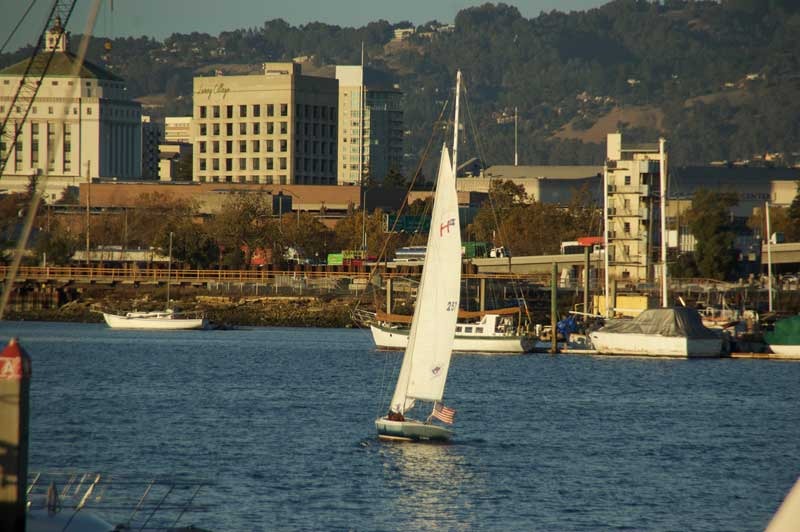
©Latitude 38 Media, LLC
Today looks like another one of those days, and you know what 511.org will look like around 4:30 or 5 p.m. How quickly can you get your boat off the dock, sails set, engine off (or never on!) and be enjoying the Bay Area’s great escape?
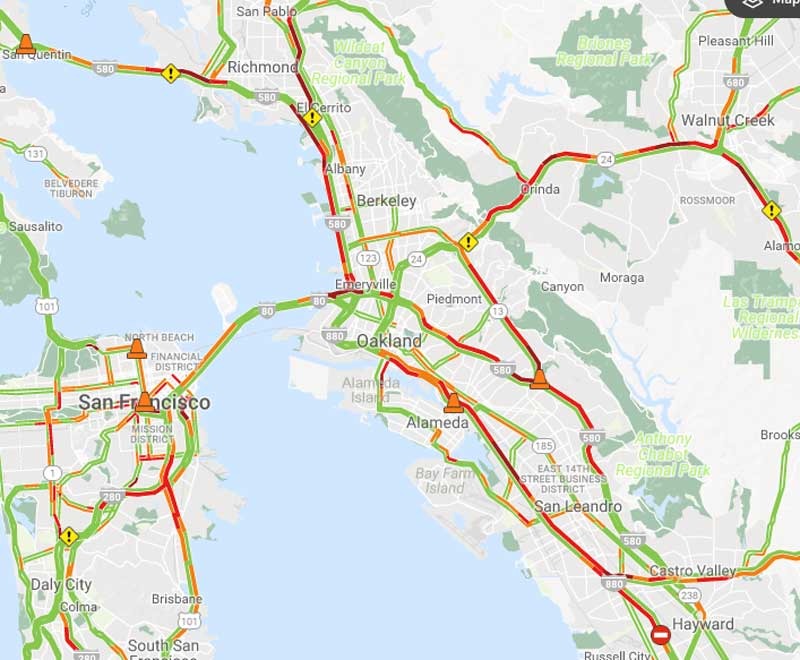
Sailing and Dredging in Santa Cruz
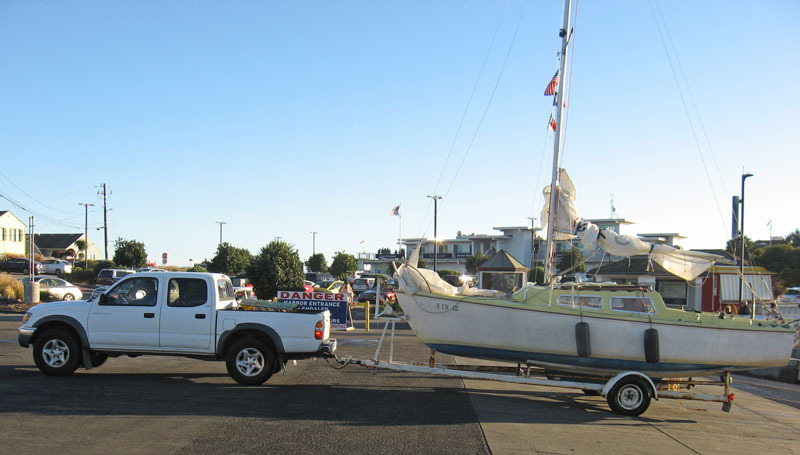
Seeking a change of pace from daysailing on San Francisco Bay, reader Vikas Kapur headed to Santa Cruz last weekend for a sail on Monterey Bay in a Catalina 22. "I’ll need to pull out the foulies for the pocket cruiser. Each time I sail a pocket cruiser I get totally soaked — cold and wet from head to toe — it goes with the territory. I don’t usually get to deploy full foulies otherwise."
But on Monday he reported that, although it was very clear and cold, "the near Pacific can be a big lake sometimes, and those were the conditions most of the day — no foulies. In the 200 square miles around us, we saw maybe about 10-15 sailboats all day. On the other hand, the drive back was about 40 miles and took almost two hours — bumper to bumper most of the time."
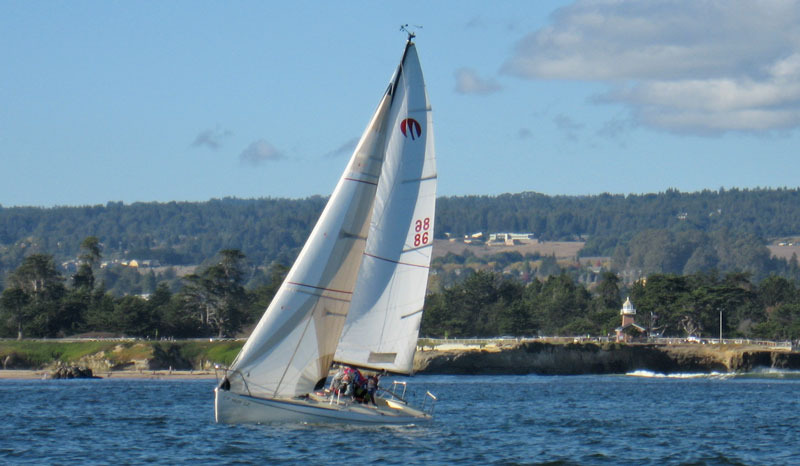
"It was a beautiful day," writes Matthew Coale, co-owner with Beau Vrolyk of the Moore 24 Scarlett, "and it was light, but with only a #3 jib we had a great sail. The new #1 may be out for the Midwinter Series. But the Moore does quite well in light airs. Downwind on a reach was just right with the kite and got us into the harbor in a timely manner before sundown. My crew were longtime Moore 24 fleet member Tina Verutti and Farr 40 Astra crew Ashley Neway. Good friends make the best crew."
The SCYC Midwinters start this Saturday, November 18, and run one Saturday each month through March, harbor entrance permitting. It’s dredging season in Santa Cruz through April. "Mariners are advised to check weather and tide conditions and the latest entrance sounding prior to transiting the entrance," says Port Director Marian Olin. "Remember that entrance soundings are adjusted to mean lower low water." Know your vessel’s draft!
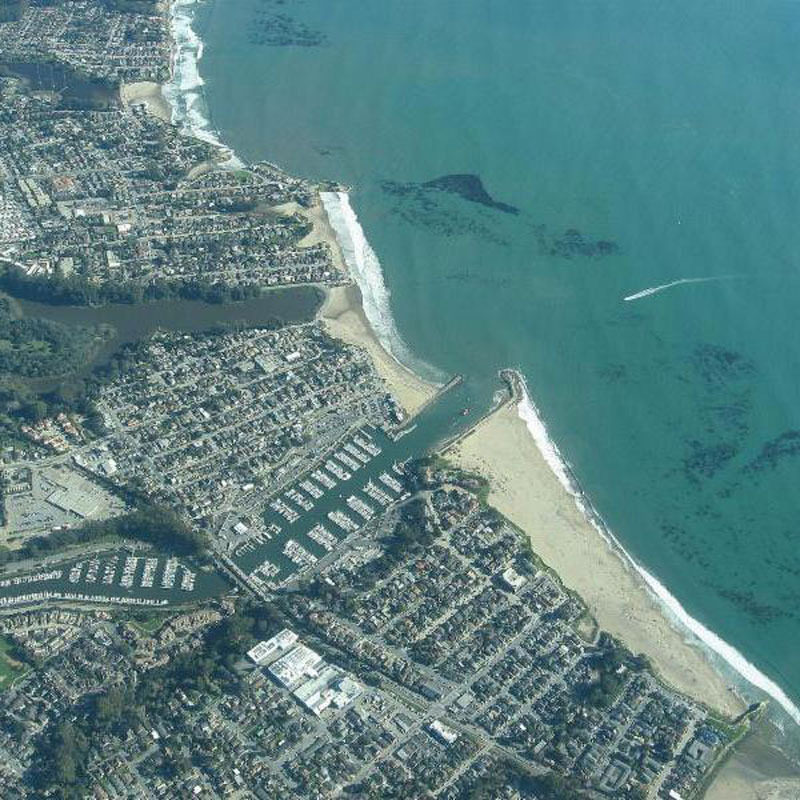
The dredger, Twin Lakes, should be passed on the east (Crow’s Nest) side of the channel unless otherwise marked. "Stay at least 50 feet away from the dredge when passing. When dredging operations are underway, the crew can be contacted on VHF channel 8 for passing instructions." The harbor office monitors VHF 9 and 16, and can be reached by phone at (831) 475-6161.
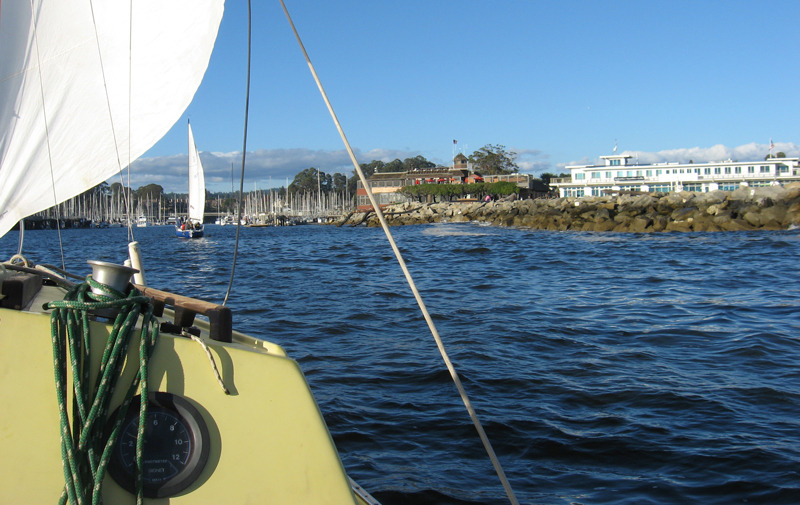
Kapur shares some recommended reading for long winter nights: "The Building of Santa Cruz Harbor is 132 pages of dense (and often excruciating) detail. One learns of the giant tetrapods (25-ton four-legged concrete castings) that comprise the 25,000-ton top of the seawall. About 600,000 tons of mud, rock and concrete were used in the construction of Santa Cruz harbor in the 1950s. The write-up is at the SC Harbor website here."
Soldini and ‘Maserati’ Try for a Record
One of our favorite sailors — and one of our favorite boats — has announced plans to attempt a world record.
In January, Giovanni Soldini and Maserati will attempt to break the 13,000-mile ‘Tea Route’ record from Hong Kong to London by way of the Cape of Good Hope. The record is currently held by Gitana, a 100-ft catamaran that was skippered by Lionel Lemonchois in 2008, and set a record of 41 days.
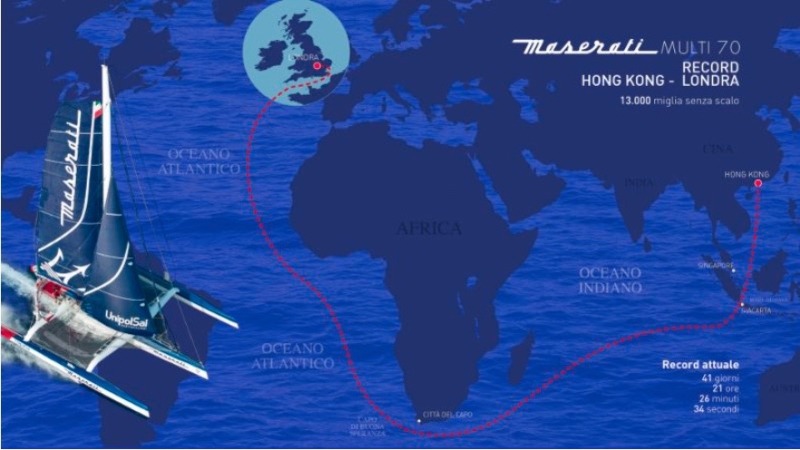
"Hong Kong to London is a historic and epic route," Soldini said in a press release, referring to the run clipper ships used to sail from the spice-rich orient back to England. Soldini called the attempt a "sporting challenge," recognizing the daunting task of beating Gitana’s record, even though the French catamaran was 30 feet longer. "This run is probably the longest any MOD70 has ever attempted," Soldini said.
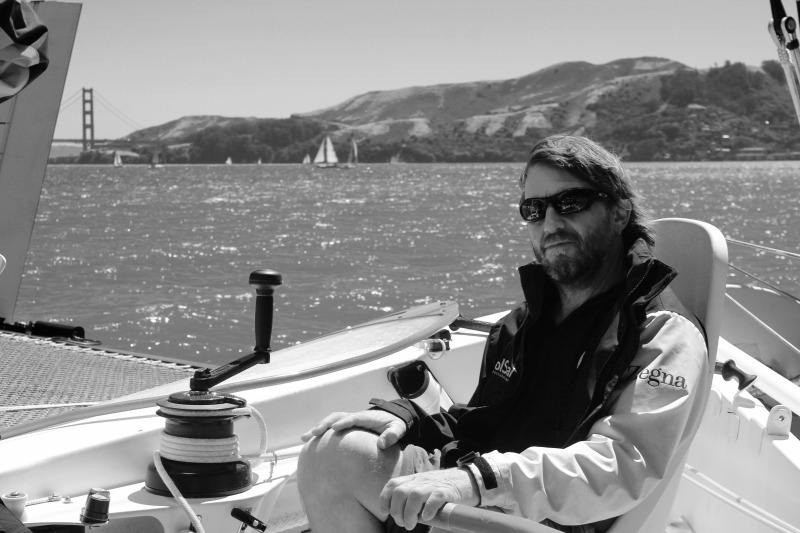
©Latitude 38 Media, LLC
After taking third-place finish in this year’s much-anticipated Transpac — and after several months in the yard in Honolulu — Maserati will not be attempting the Tea Route record with her foils. "To minimize the risk of damage, instead of sailing in foiling mode, the boat will be set up in MOD configuration, although the work to develop the boat’s foiling daggerboards continues," the press release said.
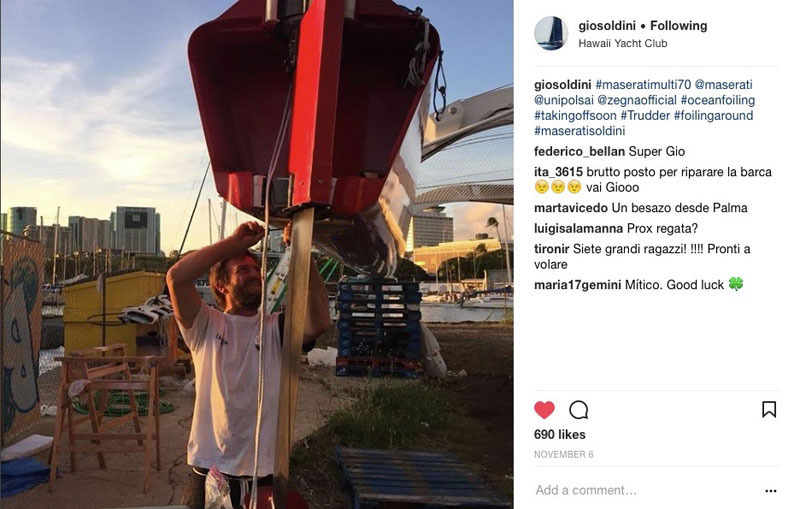
Soldini is no stranger to challenging clipper-ship routes. In 2015, Maserati — the monohull, a Volvo 70 (formerly Ericsson 3) — took the record for the ‘Tea Clipper Trade Route’ between San Francisco and Shanghai, China. And in 2013, that same Maserati claimed the best time for ‘Gold Route’ from New York to San Francisco.
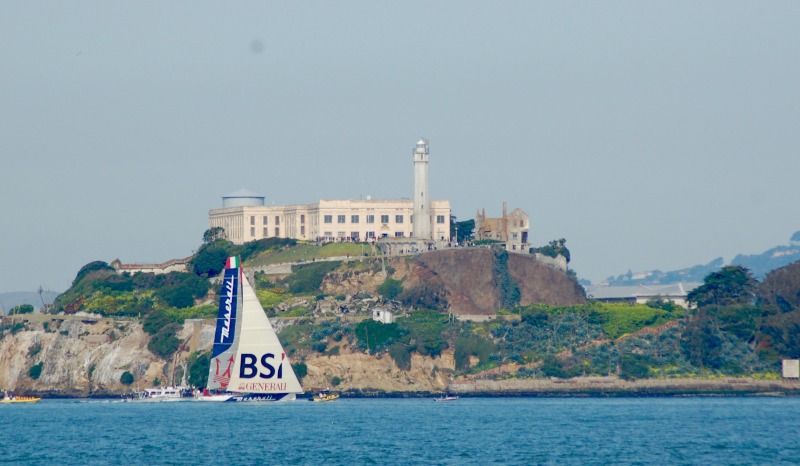
©2017Latitude 38 Media, LLC
Soldini has carved out an interesting niche by challenging trade routes in modern boats, while always paying homage to history. "The story of the Clipper routes of the Victorian age is fascinating," Soldini said in the press release. "Being first in London meant selling tea at three times the price of those who arrived later. It was on these routes that people first started to think about how to make boats sail faster and perform better and this was the origin of modern yacht design."
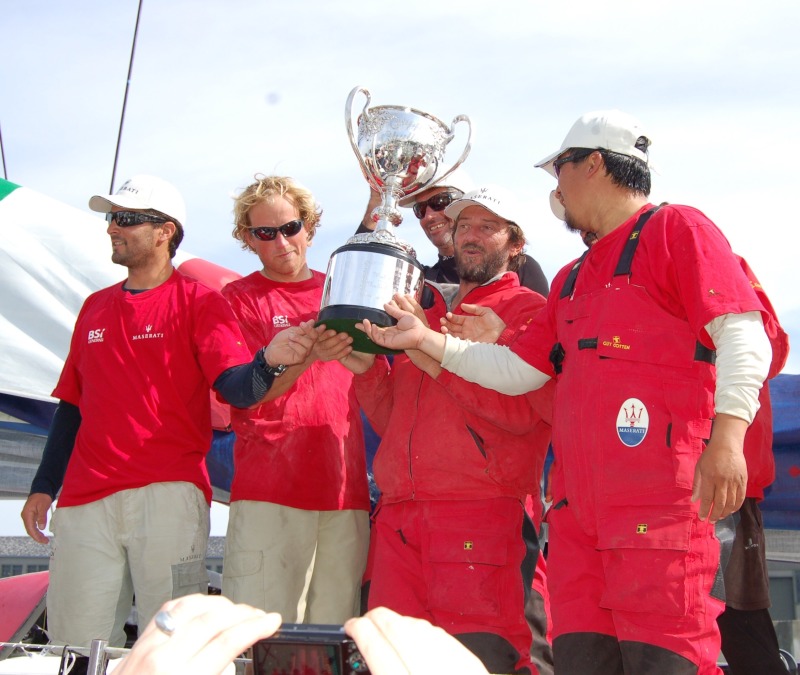
©2017Latitude 38 Media, LLC
After sailing under the Gate in 2013, we learned that Soldini was fascinated by stories of Flying Cloud, the 225-ft Clipper ship that held the New York to San Francisco record for 135 years (until it was broken in 1989 by Thursday’s Child.) Soldini professed his admiration of Flying Cloud’s navigator, Eleanor Creesy. "She chose a nearly perfect route, with no information, no satellites, no anything," we quoted Soldini as saying in the March 2013 issue of Latitude. "She really was a fantastic navigator. Much better than I."
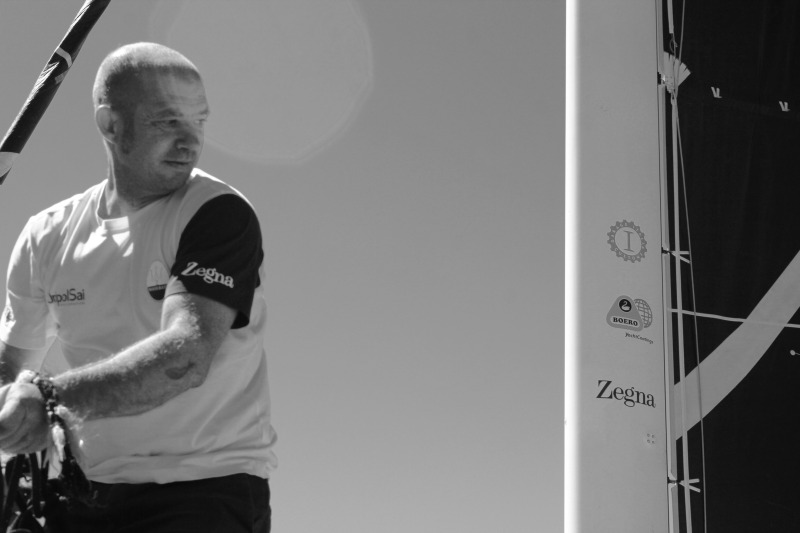
©2017Latitude 38 Media, LLC
Soldini will be joined by his long time boat Captain Guido Broggi, as well as Frenchman Sébastien Audigane, and Spanish sailors Oliver Herrera and Alex Pella.
Are you a fan of these kids of records? Let us know?
ARC+ Rally Departs
The Atlantic Rally for Cruisers, the granddaddy of all cruising rallies, got underway on Wednesday with the first of two fleets. Seventy ARC+ ralliers departed the Cape Verdes Islands with 15 knots of breeze under blue skies. The remaining 160 boats will start the ARC Rally from Gran Canaria this Sunday the 19th.
Thirteen of the 260 boats signed up to make the 2,700-mile voyage from Gran Canaria to St. Lucia are from the US. About 37 countries are represented in the fleet, and 32 of the 260 boats are multihulls. The smallest boat is a 30-ft Pogo, the largest a 90-ft Sparkman & Stephens, with the average length in the fleet about 45 feet. Despite being primarily a cruising rally, 27 of the boats are signed up in the Racing Division.
Local sailor Ian Deas from Walnut Creek is crewing with friends aboard the Catana 471 Umoya of London and will be starting on Sunday from Gran Canaria. Ian spent this past summer cruising his Hanse in the Med, but it’s now resting for the winter in Mallorca, so why not make a trade-wind passage to paradise?
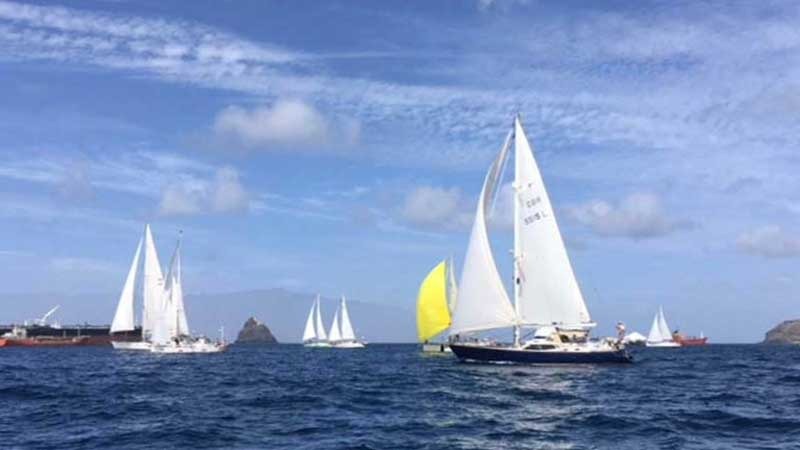
The ARC, founded by Jimmy Cornell in 1986, takes sailors leaving Europe’s summer cruising season on the classic tradewind route to the islands. They’re following on the heels of the just-finishing Mini Transat fleet and look to have, at the moment, comfortable sailing conditions ahead. If you want to follow the fleet you can cruise ‘with them’ on the tracker here.
